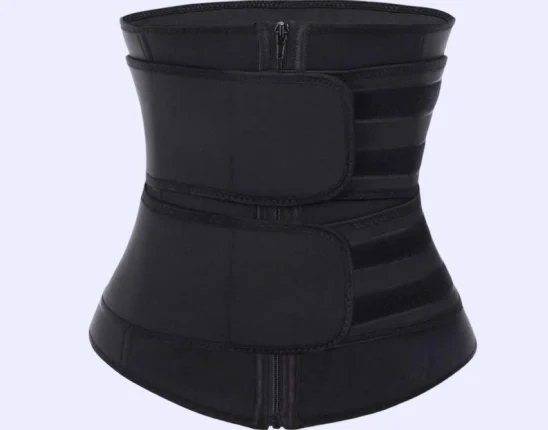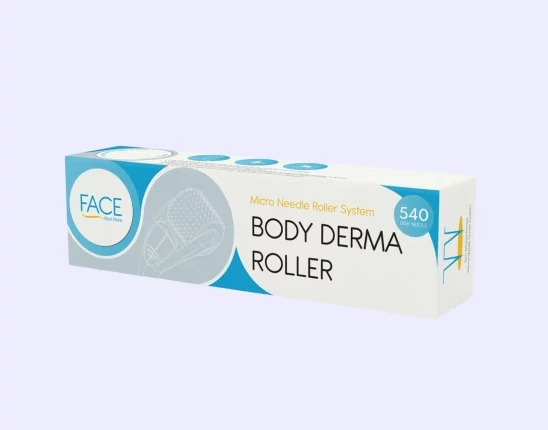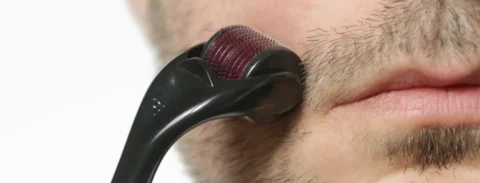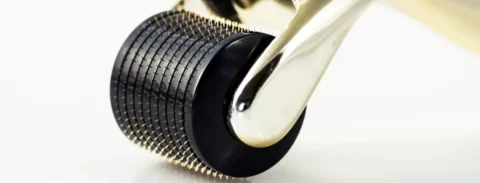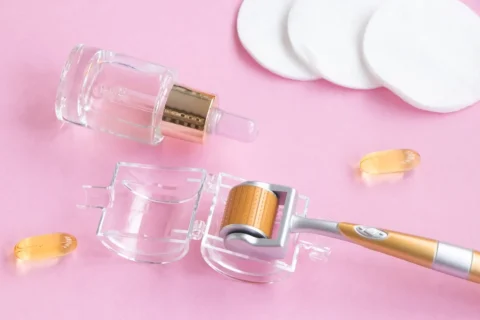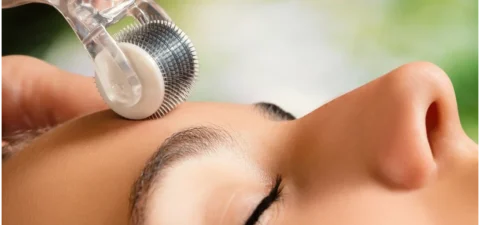LED light therapy has been slowly gaining popularity among different patients because of its versatility in fighting several skin issues, such as acne, wrinkles, and fine lines. But to maximize its skin rejuvenation results, some people add this treatment to their derma rolling sessions.
So is it safe to use derma rollers and red light therapy for skin rejuvenation at the same time? Yes, derma rollers and red light therapy are two minimally invasive skin treatments that complement each other. Red light therapy erases different skin issues while derma rollers rejuvenate the skin to achieve the patient’s desired results.
The Perfect Pairing of Red Light Therapy and Derma Rolling: How They Work
Almost everyone suffers from different skin issues – acne scars, fine lines, wrinkles, dark spots, dry skin, and more. If the usual skincare products don’t improve your skin condition after months of regular use, then a combination of minimally invasive skin treatments might work better for you.
Derma rolling and red light therapy are two popular non-surgical procedures that help treat a variety of skin concerns. They’re both safe to try at home using the right devices, which makes them accessible for many people.
Combining these two treatments gives patients optimal skin rejuvenation results. To know more about why these treatments work great together, it helps to understand how each of them works first.
Using Derma Rollers Alone to Rejuvenate the Skin
Derma rolling (or collagen induction therapy) is a popular non-surgical cosmetic procedure that stimulates the production of collagen and elastin. Since it involves puncturing the surface of the skin, some people are afraid that the treatment is painful. However, derma rolling is safe enough to be performed at home and the pain is usually tolerable for most people.
How it Works
During a derma rolling treatment, patients use a derma roller to lightly pierce the surface of the skin. Derma rollers are small, handheld devices with a wheel full of tiny needles. The needles penetrate the outer layers of the skin and trigger the body’s collagen production, resulting in healthier and blemish-free skin.
If you’re trying derma rollers for the first time, here are directions on how to use them correctly to avoid hazards and risks of infections:
- Disinfect the derma roller using isopropyl alcohol for about 7 to 10 minutes.
- While waiting for the derma roller to finish disinfecting, wash the face with a gentle cleanser. Tie your hair to prevent it from getting in the face while derma rolling.
- Use a numbing cream if your pain tolerance is low. If you try to derma roll deeper than 1.0 mm, a numbing cream that contains at least 5% is highly recommended to help with the pain.
- Apply the derma roller across the smaller sections of the skin to ensure that there are no skipped spots. Roll over each area about 6 to 8 times horizontally, then 6 to 8 times vertically.
- Clean the derma roller using a soapy mix in a plastic container. Swish the roller around but make sure it won’t hit the sides of the container.
- Disinfect the roller again by soaking it in isopropyl alcohol for 7 to 10 minutes before storing it back in its case.
What Should I Use Derma Rollers For?
Derma rolling has tons of benefits for the skin – it erases scars, smooths wrinkles, minimizes pores, and fixes uneven skin tone and texture. Derma rollers come in different needle lengths that work on specific skin issues, so make sure to look up which one works for the skin concern you’re treating.
This treatment works better when paired with skincare products like hyaluronic acid serums because the micro-channels on the skin improve product absorption. However, some ingredients should be avoided after a derma rolling treatment because they cause skin irritation, like glycolic acid, AHAs, and BHAs. It’s better to stick to products with gentle, nourishing, and moisturizing formulas.
Results and Risks
Since derma rolling is a minimally invasive procedure, there aren’t many side effects or risks to worry about if the device is used correctly. Just make sure to disinfect it before and after every use for hygienic purposes. Avoid sharing the derma roller with others to prevent the risk of infections or blood-borne diseases.
After the derma rolling treatment at home, it’s normal for the skin to look red, swell, and feel sunburned. There’s no need to panic because this is normal; these symptoms usually subside after a few hours or days. The skin might also start peeling off, but don’t pick at it – wait for the peeled-off skin to fall naturally.
While the results of derma rolling last long, it takes a while for the skin to show visible results because the body needs to produce more collagen and elastin first. According to a 2011 study, patients may see improvements on the treated areas of their skin in as little as 2 to 3 sessions of derma rolling treatments.
At-Home Derma Rolling vs. Professional Microneedling
Traditional microneedling is usually performed by a professional inside a doctor’s office. This treatment reaches deeper into the skin, which makes it a lot more effective than the at-home procedures. However, professional microneedling treatments are more expensive and painful than derma rolling which is why some patients prefer the latter.
Although derma rolling at home is more affordable and convenient, it’s important to use the right tools and know how to do it right to achieve the desired results. They won’t produce the same high-quality results as professional microneedling treatments do, but they’re definitely better than simply using anti-aging skincare products as they are.
Using Red Light Therapy for Treating Skin Concerns
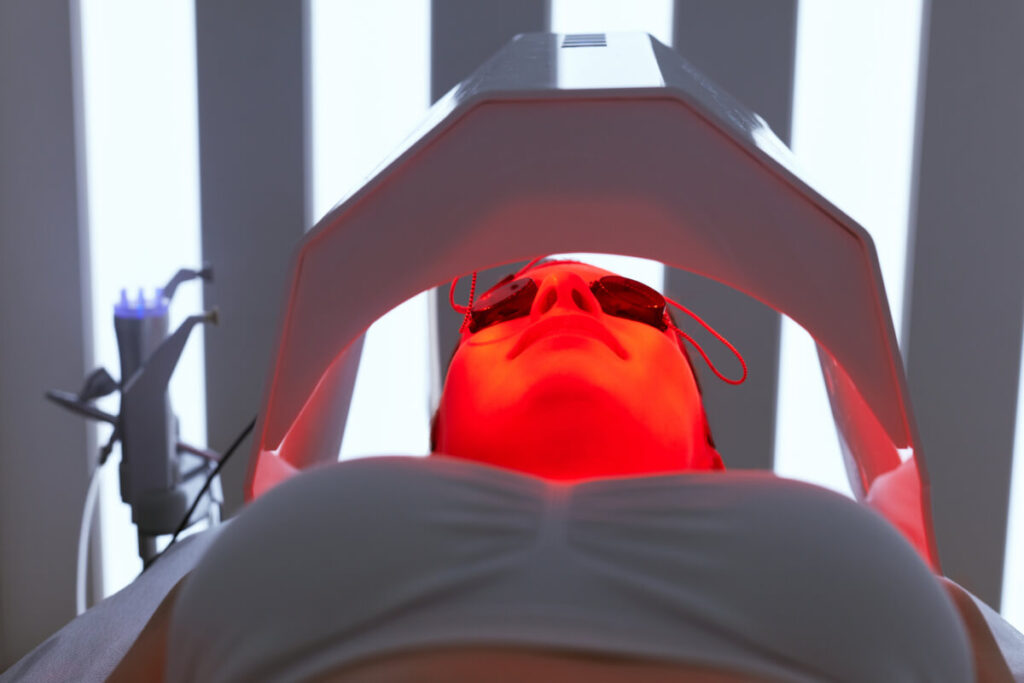
Red light therapy is another simple yet effective way to help treat several skin concerns and other medical conditions. It utilizes red low-level light waves to promote cell growth, effectively reducing the appearance of wrinkles and other skin issues.
Another LED therapy similar to this one is the blue light therapy. But instead of improving the blood circulation and promoting cell growth, this professional treatment works by destroying the acne-causing bacteria trapped in the pores and beneath the superficial layer of the skin.
How it Works
The red light from the special device used in the treatment produces a biochemical effect in the skin cells and strengthens the mitochondria. This causes the cells to create more energy, allowing them to function efficiently and repair cell damage.
What’s great about this LED treatment is that it skips the usual process of controlled damage on the skin to induce tissue repair – the red light emitted during the treatment reaches as deep as 5 mm below the skin surface to reach the skin cells better.
Light therapy treatments are safe to perform at home using the right LED device. Patients may return to their daily routine after their session because there’s little to no need for downtime. Each red light therapy device comes with a guide, but here’s how to use most of them at home:
- Pick a schedule for the red light therapy so you won’t forget how to do it. Make the treatment a lot more comfortable by pampering yourself with some spa music and aromatherapy.
- LED lights from the device aren’t harmful to the eyes, but it’s better to wear protective eyewear during the treatment.
- Turn on the red light therapy and focus it on the treatment areas. Try 10 to 20 minutes sessions 3 times per week first before increasing the number of weekly sessions.
- Sit comfortably in a chair while enjoying the soothing warmth of the red light device.
What Does Red Light Therapy Treat?
Red light therapy has a ton of promising health benefits, but a lot of them are yet to be proven with scientific evidence. But since this type of treatment doesn’t have a lot of severe side effects to be wary of, many people use it to treat skin issues like sun damage, acne scars, hyperpigmentation, loose skin, cellulite, stretch marks, pain, and inflammation to name a few.
Results and Risks
Like microneedling and derma rolling, the severe side effects are rare for patients who try red light therapy at home. They’re safe and painless, but there’s a risk of blisters for people who stay under the red light for too long. There have also been cases of burns caused by device corrosion and broken wires, which is why it’s extremely important to pick a safe device to use at home.
The exact time it takes to see improvements on the skin varies per patient, but the results aren’t instant. It takes a while for the skin to repair its cells, which is why it’s crucial to have months of consistent treatment sessions.
While it definitely helps with different skin and health conditions, this effective treatment shouldn’t be considered a cure. For more severe skin conditions like psoriasis or eczema, it’s better to consult with a doctor or dermatologist about the best treatment plan.
Professional vs. At-Home Red Light Therapy
Red light treatments may be performed at home or inside a doctor’s office as a part of a skin rejuvenation plan. They come in a wide range of sizes and types, such as LED masks, wands, stand-up panels, or body beds. While at-home red light energy treatments aren’t as powerful as professional procedures, they’re still beneficial for the skin and overall health.
Before trying red light masks at home, make sure to purchase high-quality LED devices first. This helps minimize the chance of experiencing risks like burns due to faulty wiring and device corrosion.
Is It Okay to Combine Two Skin Rejuvenation Treatments Together?

Since both derma rolling and red light therapy have a ton of benefits for the skin and minimal side effects, it’s only natural for some people to wonder if they’re safe to use together. These treatments go well together since one of them induces collagen production while the other encourages cell growth and repair.
Some manufacturers even introduced 2-in-1 derma rollers, but they’re not as effective as performing the treatments one after the other. Red light therapy needs to undergo specific colors of light for a few minutes of uninterrupted exposure.
Derma rolling prevents patients from doing this because this treatment involves constant movements in different directions. The light from the device becomes negligible and won’t produce the desired results.
Are There Risks I Should Be Worried About?
While they’re both safe treatments as long as performed correctly with the right tools, derma rolling and red light therapy might cause temporary irritation and discomfort on the skin. They might also cause temporary tightness and redness, so make sure to proceed with caution when performing these treatments at home.
Is This the Right Treatment Plan for Me?
Both treatments work great for patients with different skin problems, as well as various skin types. But make sure that there aren’t active acne or infections in the treatment areas to avoid irritating the skin and causing more complications. It also helps to consult with a dermatologist or aesthetician about the best treatment plan before trying out any procedures by yourself.
Find High-Quality Derma Rollers and Red Light Devices at FACE Med Store
FACE Med Store is a trusted source of high-quality derma rollers and LED light therapy systems. We offer medical-grade tools and equipment to patients who want to try the treatment at home, as well as to medical spas and skin clinics that want to provide their patients with the best skin rejuvenation treatments.
Browse through our website today to know more about our best skin care devices and find great deals for you or your clinic.

